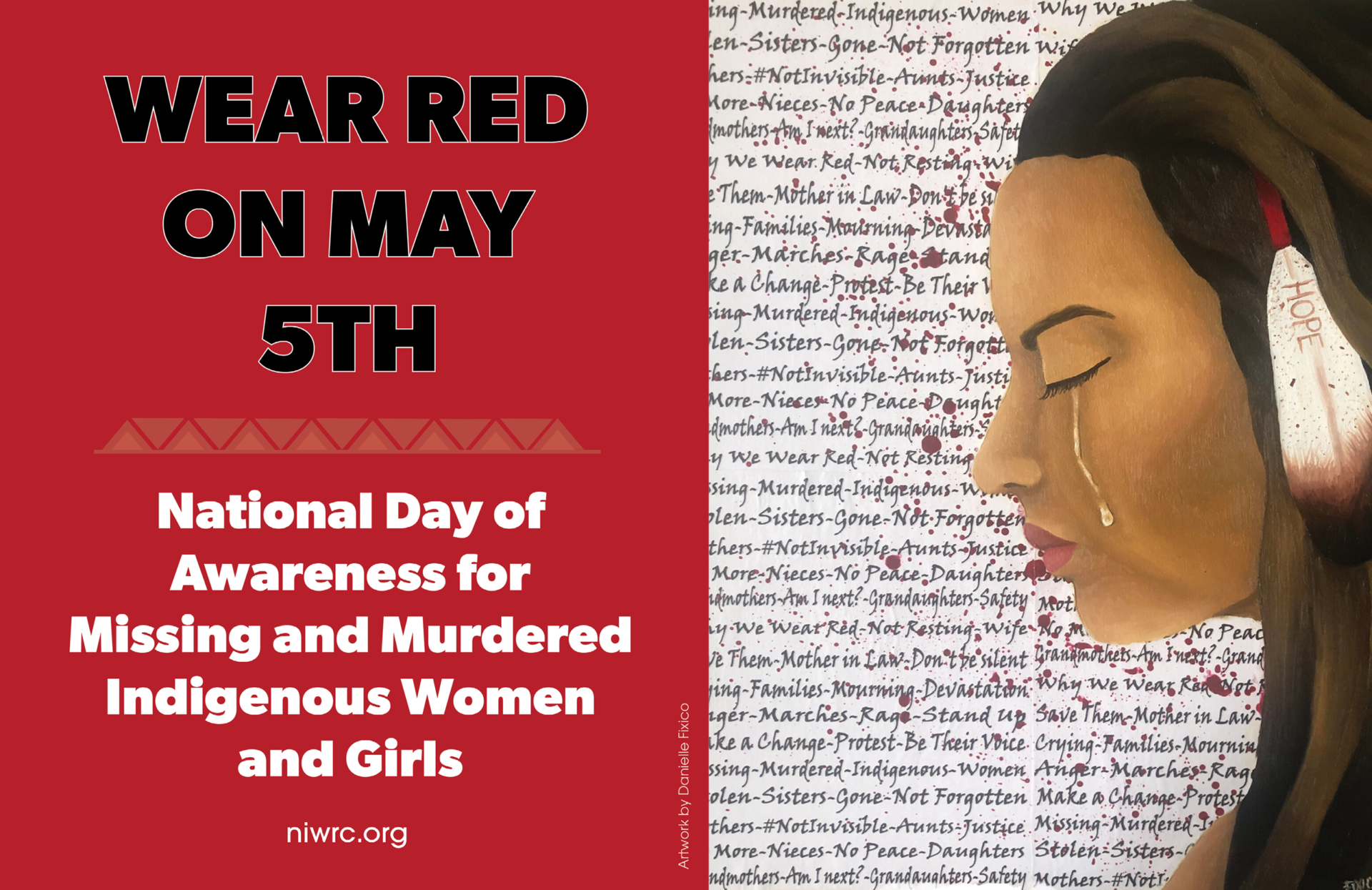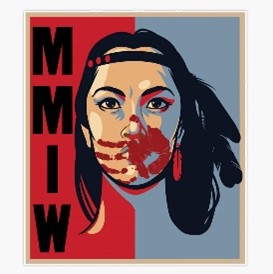Missing and Murdered Indigenous Women
Nationwide, the voices of Indigenous people have united to raise awareness of missing and murdered Indigenous woman and girls (MMIWG). Though awareness of the crisis is growing, data on the realities of this violence is scarce.
MMIW Awareness Day Resources
 “The National Crime Information Center reports that, in 2016, there were 5,712 reports of missing American Indian and Alaska Native women and girls, though the US Department of Justice’s federal missing person database, NamUs, only logged 116 cases.”
“The National Crime Information Center reports that, in 2016, there were 5,712 reports of missing American Indian and Alaska Native women and girls, though the US Department of Justice’s federal missing person database, NamUs, only logged 116 cases.”
Native Americans today face some extraordinary challenges. These statistics from the Urban Indian Health Institute were compiled from a survey of 71 U.S. cities in 2016. The numbers speak for themselves: Native American women make up a significant portion of the missing and murdered cases. Not only is the murder rate ten times higher than the national average for women living on reservations but murder is the third leading cause of death for Native women. These statistics reveal a painful reality of neglect and crisis.
The Missing and Murdered Indigenous Women and Girls (MMIWG) movement was established to raise awareness, demand justice, and advocate for policy changes to improve reporting, investigation, and support systems for Indigenous victims and their families. The goal of MMIWG is not only to end the violence but also to reclaim and protect the rights, safety, and dignity of Indigenous people in their pursuit of justice and equity.
The MMIW Red Hand:
 A red hand over the mouth has become the symbol of a growing movement, the MMIW movement. It stands for all the missing sisters whose voices are not heard. It stands for the silence of the media and law enforcement in the midst of this crisis. It stands for the oppression and subjugation of Native women who are now rising up to say #NoMoreStolenSisters.
A red hand over the mouth has become the symbol of a growing movement, the MMIW movement. It stands for all the missing sisters whose voices are not heard. It stands for the silence of the media and law enforcement in the midst of this crisis. It stands for the oppression and subjugation of Native women who are now rising up to say #NoMoreStolenSisters.
Get Involved:
Want to join the MMIW movement, but not sure where to start? Get your free MMIW social media toolkit and start sharing and educating today.
Resources:
Violence Against American Indian and Alaska Native Women and Men
- 2010 Findings From the National Intimate Partner and Sexual Violence Survey
This report examines the prevalence of violence against American Indian and Alaska Native women and men, using a large nationally representative sample from the National Intimate Partner and Sexual Violence Survey (NISVS). More specifically, it provides estimates of sexual violence, physical violence by intimate partners, stalking, and psychological aggression by intimate partners. It also provides estimates of interracial and intraracial victimizations and briefly examines the impact of violence. Results should be used to raise awareness and understanding about violence against American Indian and Alaska Native women and men. Read the full report. - NCAI VAWA Report – summarizing results of the first five years of tribal government-expanded criminal jurisdiction over non-Indians under the tribal provisions of the 2013 reauthorization of the Violence Against Women Act (VAWA 2013)